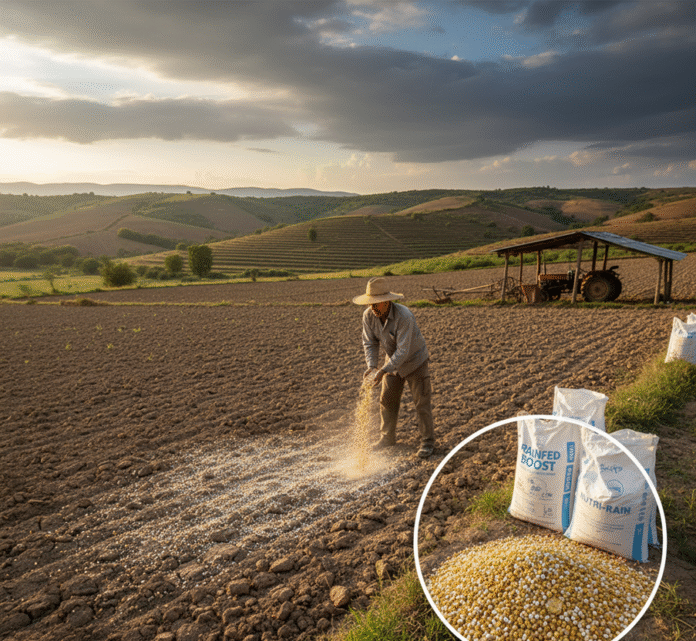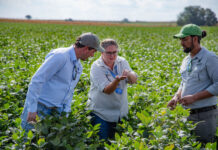According to Research Intelo, the global Rainfed Agriculture Fertilizers market size reached USD 51.2 billion in 2024, demonstrating robust growth supported by increasing demand for sustainable agricultural practices. The market is projected to expand at a CAGR of 5.8% from 2025 to 2033, reaching a forecasted value of USD 85.3 billion by 2033. This growth is driven by the rising need to improve crop yields in rainfed areas, where water availability is unpredictable and efficient fertilizer usage plays a critical role in ensuring food security and farmer profitability.
Rainfed agriculture dependent solely on rainfall without irrigation accounts for nearly 80% of the world’s cultivated land and supports a significant portion of the global population, especially in developing regions. However, the inherent unpredictability of rainfall, coupled with poor soil fertility, often limits crop yields and agricultural sustainability. To bridge this gap, fertilizers tailored for rainfed farming systems are gaining strategic importance. The Rainfed Agriculture Fertilizers Market is thus emerging as a critical segment in global agricultural input industries, offering innovative nutrient solutions that enhance soil productivity, water-use efficiency, and climate resilience.
Drivers of Market Growth
Rising Global Food Demand
As the global population approaches 9 billion, the pressure on existing agricultural lands continues to rise. Rainfed areas, representing the majority of arable lands in several developing countries, are pivotal to meeting future food demand. Fertilizers that can enhance crop productivity under moisture-stressed conditions are becoming indispensable tools for ensuring food security.
Government Support and Agricultural Reforms
Several national and regional programs are encouraging the use of fertilizers in rainfed areas. For instance, subsidies, soil health initiatives, and training programs under schemes such as India’s “Paramparagat Krishi Vikas Yojana” or Africa’s “Fertilizer and Soil Health Initiative” have increased the adoption of balanced nutrient application techniques. These initiatives not only boost demand for fertilizers but also promote sustainable soil fertility management.
Technological Advancements in Fertilizer Formulations
Modern fertilizers are being designed with enhanced efficiency characteristics—slow-release mechanisms, nano-fertilizer technologies, and bio-based nutrient carriers. Such innovations help reduce nutrient losses due to runoff and volatilization, ensuring that crops in rainfed systems can access nutrients over a longer duration, even during inconsistent rainfall periods.
Expanding Role of Biofertilizers
The shift toward organic and eco-friendly agriculture has amplified the use of biofertilizers in rainfed regions. Microbial inoculants such as Rhizobium, Azospirillum, and Phosphate Solubilizing Bacteria (PSB) improve soil fertility naturally. Their role in maintaining soil microbiome balance while enhancing nutrient uptake makes them ideal for low-input rainfed systems.
Challenges and Restraints
Despite its growth potential, the rainfed agriculture fertilizers market faces several structural and operational challenges:
- Uncertain Rainfall Patterns: Erratic monsoon behavior and prolonged dry spells limit fertilizer efficiency and farmers’ willingness to invest.
- Poor Soil Management Practices: Inadequate soil testing and unbalanced fertilizer use often degrade soil health.
- Limited Access and Affordability: High fertilizer prices and lack of distribution infrastructure in rural rainfed areas hinder market penetration.
- Knowledge Gaps: Smallholders often lack awareness about optimal application techniques and nutrient timing, leading to low fertilizer efficiency.
These barriers underline the need for holistic extension services, local manufacturing capacity, and policy interventions to make fertilizers more accessible and context-specific for rainfed conditions.
Future Outlook
The Rainfed Agriculture Fertilizers Market is projected to witness steady growth over the next decade, fueled by the global need for resilient, sustainable food systems. The integration of agritech tools, soil health analytics, and climate-adaptive nutrient management will redefine fertilizer strategies in water-limited environments.
Looking forward, success in this market will depend on three key pillars: innovation in fertilizer science, inclusive access for smallholders, and effective policy frameworks promoting balanced nutrient use. By addressing these dimensions, the market will play a pivotal role in transforming rainfed agriculture from vulnerability to viability.
Competitive Landscape
Prominent companies operating in the market are:
- Yara International ASA
- Nutrien Ltd.
- The Mosaic Company
- CF Industries Holdings, Inc.
- ICL Group Ltd.
- EuroChem Group AG
- K+S Aktiengesellschaft
- Uralkali PJSC
- OCI N.V.
- Haifa Group
- Coromandel International Limited
- Indian Farmers Fertiliser Cooperative Limited (IFFCO)
- Sinofert Holdings Limited
Source: https://researchintelo.com/report/rainfed-agriculture-fertilizers-market








